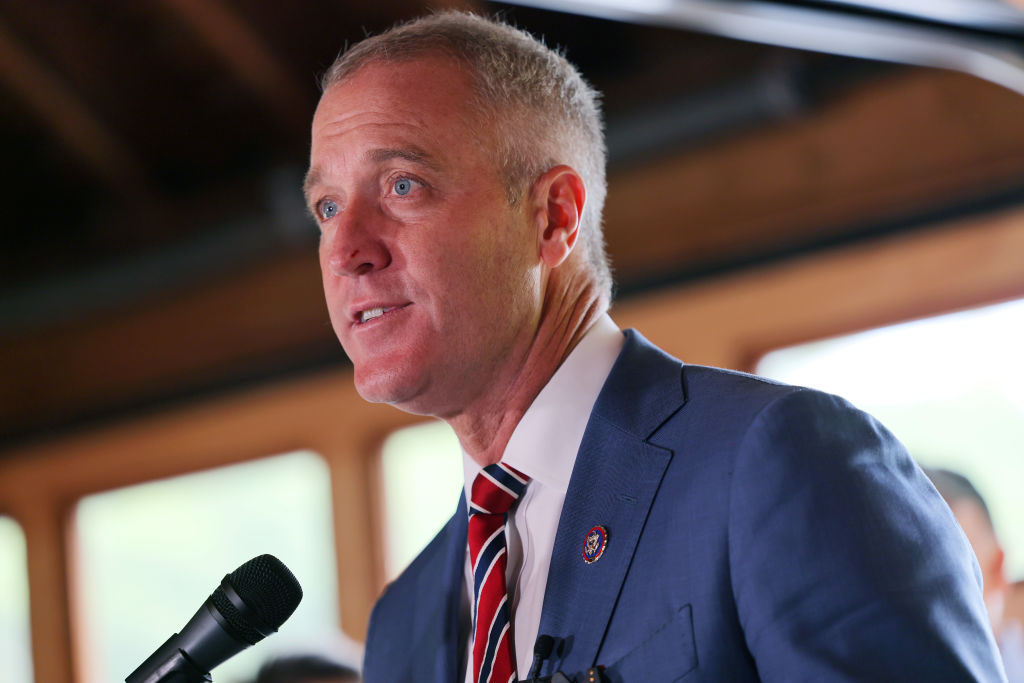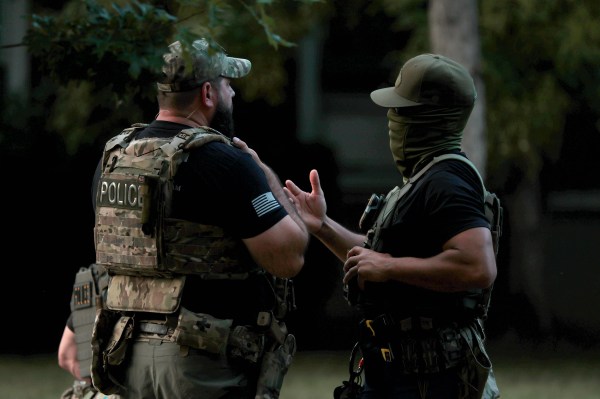Questions I’ll Be Thinking About on Election Night:
1. What evidence will answer what—if any—effect abortion politics had on these races?
For example, if Stacey Abrams loses, there will be plenty of pundits on the right saying, “look, abortion messaging didn’t work!” But how do we know whether she lost only by 4 when she would have lost by 6 without the Dobbs decision?
We have the referendums in states like Kentucky and Michigan, but those will tell us more about “split ticket” voters than directional motivation, since split ticket voters by definition don’t change their candidate vote based on their issue preference and it’ll be hard to parse whether “same ticket” voters were moved by the issue or the candidate. We can compare candidates like Tim Ryan who haven’t focused on the issue to candidates like Abrams who have and see whether either outperform expectations, but it’s difficult to control for the other variables. We can look at exit polls, but there’s a chicken-and-egg problem. How do we tell the difference between motivated hard-left voters who tell exit pollsters that abortion was an important issue for them because it is this cycle’s socially desirable answer for a left-leaning voter and voters who were actually motivated by abortion as a policy issue?
2. Assuming the GOP wins the House and Senate, what will their governing agenda look like without the White House?
Obviously there will be the investigations into Hunter Biden and whether the Department of Justice sufficiently cared about threats to crisis pregnancy centers in the wake of Dobbs. Then there will be the relatively narrow set of things that could get bipartisan support. Maybe some stuff on China or trade. Or perhaps the horseshoe theory of partisanship will mean social media companies lose their Section 230 protections.
Then there will be “messaging bills” passed for the purpose of getting Biden to veto them. Can Republicans pass a 25-week ban on elective abortions and force Democrats to vote to protect third trimester abortions? Can the GOP pass a standalone border security and enforcement funding bill? What about a bill limiting Title IX eligibility to schools that protect women-only competitions? This is where things get interesting for me. Do you paint Democrats into a corner or worry about your right flank in the next primary?
3. If the polls were right this time, what fixed them?
Vibe Check: Here’s the inimitable Josh Kraushaar over at Axios on the latest midterm vibes: “Polling, spending trends and conversations with leading Democratic and Republican strategists suggest it’s now very possible House Republicans win back the majority on Nov. 8 with more than 20 House seats—once the upper range of most analysts’ projections,” Kraushaar writes. “In the Senate, Republican officials are now bullish they’ll gain at least the one seat necessary to regain the majority.”
Here’s the thing. Everyone involved in elections likes the topsy turvy world where the horses move up and down during the race. Operatives can say they worked on top tier races. Fundraisers can ask for more money. Pundits become relevant. But what if this midterm is more easily explained by the fundamentals: historical trends favoring the party out of the White House, low presidential approval numbers, and bad economic signs around gas prices and inflation? Was the rest just noise?
‘It’s Not a Good Look When the Lifeguard Needs to Be Rescued’
Last week I promised you a deeper dive on another pool of blue with red in the water. And Audrey did not disappoint. What happens when the other side takes aim at one of the generals?
Running a party’s campaign operations during a tough midterm cycle is always a slog. But the job becomes much more difficult when you’re facing a competitive race of your own.
Take New York Rep. Sean Patrick Maloney, the chairman of the Democratic Congressional Campaign Committee. Maloney now finds himself in a tougher-than-expected reelection battle in his own district. On Monday, the DCCC announced more than $600,ooo in new TV ad spending to protect Maloney—a dynamic that raises new questions about the DCCC chief’s ability to fairly and effectively divide House Democrats’ cash-strapped campaign resources in the final stretch of the midterm cycle.
“It’s not a good look when the lifeguard needs to be rescued,” Colin Strother, a Texas-based Democratic consultant, said of the DCCC’s intervention. “It’s pretty disappointing for Democrats on the ground in battleground districts and states to see us having to pull resources away from expanding our targets to shore up someone who should be safe.”
Maloney, who said last week he would “recuse myself from any spending decisions involving my own race,” is facing Republican Mike Lawler, a first-term assemblyman who has mounted a surprising challenge to the five-term Democrat in New York’s newly drawn 17th District. Republicans are bullish on their chances of flipping Maloney’s high-profile seat: A new internal poll released by the Lawler campaign last week showed the Republican with a narrow lead.
National Republicans have spent roughly $7 million in the race. That includes $867,000 in new spending from the NRCC announced Monday evening—on top of $1 million the group has already poured into the district—and more than $4 million in TV ads from the Kevin McCarthy-aligned Congressional Leadership Fund announced last week.
The race’s new toss-up status—and the deluge of national Democratic spending now flooding the district on Maloney’s behalf—is not a good look for the DCCC chair, who came under fire from some members of his own party last December for not doing enough to protect frontline Democrats from taking tough votes that could endanger their reelection chances.
“Since day one, Chairman Maloney has been working tirelessly as a player coach—He’s built a campaign and we’ve built an operation at the DCCC that can support that reality,” said DCCC spokesperson Chris Taylor. “As we have with every decision this cycle, we are making investments that ensure Democrats hold our House Majority.
Emerging criticisms surrounding Maloney’s leadership prowess grew even louder in May when he decided to run in New York’s newly drawn 17th—pushing freshman Democrat Mondaire Jones, a progressive darling whose constituency more closely resembled that district, into New York City territory, where he ended up losing his Democratic primary.
And after all that, Maloney is now sucking up hundreds of thousands in DCCC money in a race that was meant to be a blowout. “He thought that by bullying his way into the neighboring district—which was a couple of points bluer—that he could save himself from having a real race,” said one GOP operative. “But what ended up actually happening is that he gave up the power of incumbency to run for an open seat that frankly wasn’t even that much bluer.”
Progressives are displeased.
“The Democrats over the last couple of cycles have faced internal dissension because progressives have been getting stronger in the party, and I think that Sean Patrick Maloney’s moving districts didn’t help with that this cycle,” said former Democratic Rep. Dan Lipinski in an interview.
“Not great optics,” said Stefan Hankin, a Democratic pollster who also described the intra-party squabbles over Maloney’s tenure as a “super inside baseball” dynamic that doesn’t matter to voters outside the Beltway. That’s true, of course, but it sure matters to other members.
The DCCC’s $600,000 ad buy on Maloney’s behalf not only leaves battleground Democrats feeling they’re being hung out to dry, it has also raised calls to stop having current members serve as chair given the obvious conflict and distraction of having to run your own tough race. Maloney’s predecessor, retiring Democratic Rep. Cheri Bustos, found herself in a similar position as head of the DCCC last cycle, when she only narrowly won reelection against a strong Republican challenger.
“The plus side is someone who’s in that situation themselves understands maybe better what the difficulties are in that election running in a tough district,” Lipinski said. “The downside, though, of course is the time that’s going to take away from their work as the campaign committee chair.”
Early Voting Surge
Early vote numbers look through the roof—in North Carolina, Florida, and Georgia so far. “More than 134,000 voters cast early ballots across the Peach State on Tuesday, Georgia Secretary of State Brad Raffensperger reported,” according to Dave Williams at Georgia Public Broadcasting, “That’s a 3.3% increase over the second day of early voting two years ago. Historically, voting in midterm elections falls off substantially from voting in presidential elections.”
An increase in early voting over a presidential election year is big. I don’t think it tells us much about which candidates are winning, though. It could tell us more about how much people want to get their voting out of the way or how the controversies over Georgia’s new voting laws were actually highly successful advertising for early voting options.
But if turnout is actually high for a midterm cycle in Georgia, it will once again undermine the evidence-free “Jim Crow 2.0” talk that was coming from the Biden administration. I wrote about this a few months ago for Politico, walking through all the changes that were supposedly “more restrictive.” Some were. But a lot weren’t. And how do you compare honeycrisp apples to Fuji apples?
Under its new law, Georgia mandates 17 days of early voting, including at least two Saturdays, and open during “regular business hours,” which the state has defined as from at least 9 a.m.-5 p.m. The Brennan Center didn’t mention Massachusetts, however, which has just 11 days of early voting held during “regular business hours,” which it doesn’t define. Just in 2019, New York’s Democratic Governor Andrew Cuomo signed into law a new voting bill that was intended to make voting easier, and it only required nine days of early voting but also required polls to stay open from 6 a.m.-9 p.m.. The federal voting rights legislation supported by the president only mandates 14 days of early voting but then would require polls to be open for 10 hours on those days.
And so we run into part of the problem, which is trying to take any single election regulation in isolation. Georgia also has automatic voter registration, unlike Minnesota, and a voter doesn’t need a reason to vote by mail, unlike Massachusetts, New York, Connecticut and Delaware. But Georgia also requires that absentee voters include the number from state-issued identification, unlike any of those states.
And then there’s a question of effect. Republicans argued that more stringent voting laws would actually increase participation because people will have more faith in a system that weeds out fraud. Democrats have used the laws as a way of increasing turnout as a form of protest. And both parties seemed to be under the impression that higher turnout and more lax voting laws helped Democrats. If the purpose is to ensure everyone has a fair chance to cast a vote for their preferred candidate, then it matters whether these laws actually do keep people from voting or substantially help one party. Turns out, they don’t have much effect in either direction.
And even the more serious changes, like stricter voter ID laws that are often decried as targeting Black or low income voters, may not matter as much as either side likes to believe. Multiple academic studies have shown that these and other types of voting restrictions — limiting drop boxes and early voting — “had only minor effects on turnout and no effect at all on the Democratic margin in the presidential election” in 2020. And the effect of requiring absentee voters to provide additional proof of their identities was “pretty close to zero.” And on the other side, another study showed that “expansions of absentee voting in some states in last year’s election didn’t alter turnout.”
Taken together, these studies show that restrictions and expansions of voting laws don’t have much, if any, effect on turnout compared to the perceived importance of the election. And, of course, if these laws have no effect on turnout that also means there’s no discernible amount of fraud taking place either.
These “more restrictive” voting laws were put into place in 19 states (including four with Democratic governors) since 2020. If 2022 is a year of high turnout with large Republican margins, maybe we can drop the Jim Crow talk and the idea that fewer voters is always a good thing for the GOP. And maybe—just maybe—we can take a look at those Carter Baker Commission ideas from 2005 so that our voting laws make more sense?
Then again, here is Stacey Abrams this week: “We proved in ’18 and it remains true that turnout does not dispel voter suppression,” Abrams said Monday. “Suppression is about barriers to access. But the antidote to suppression is overwhelming the polls with your presence and that is exactly what voters did in 2018, it’s what they continued to do in 2020 and ’21 and is what we are seeing in ’22. But it is wrong to suggest that there is a correlation between voter turnout and voter suppression because suppression is about barriers.”
Your Vote Counts
Great video from the Kite & Key people breaking down three popular myths about why your vote doesn’t matter. The one I hear the most: It’s all about the benjamins. But that hasn’t been true at the presidential or statewide level in several cycles (2016, 2018, and 2020). And as this video points out, “while it’s true that the candidate who spends the most usually wins, many political scientists say that’s not because money boosts people who otherwise would have lost. … It’s because candidates who are already winning tend to attract more donations.”
They also tackle the idea that structural gerrymandering means the Senate is inherently biased because it favors small, rural red states. But as it turns out, the 10 smallest states have 10 Republican senators and 10 Democratic senators. And stagnant polarization? Only five states in the last 20 years have had all of their senators and governors from the same party. It’s a great, easy-to-digest video worth sharing with your more cynical friends!








Please note that we at The Dispatch hold ourselves, our work, and our commenters to a higher standard than other places on the internet. We welcome comments that foster genuine debate or discussion—including comments critical of us or our work—but responses that include ad hominem attacks on fellow Dispatch members or are intended to stoke fear and anger may be moderated.
With your membership, you only have the ability to comment on The Morning Dispatch articles. Consider upgrading to join the conversation everywhere.